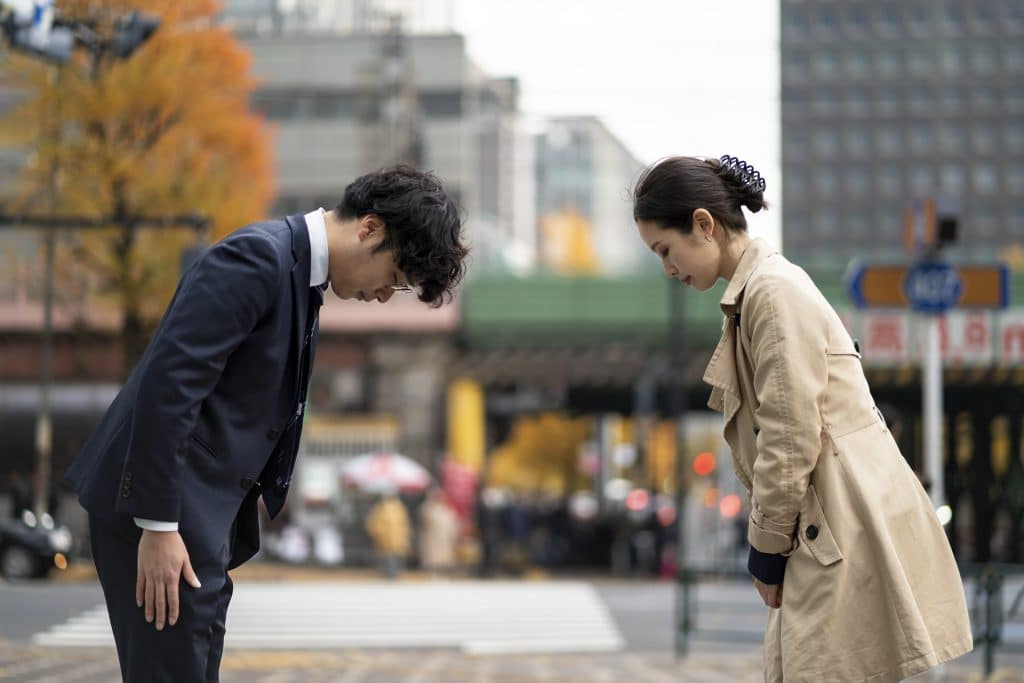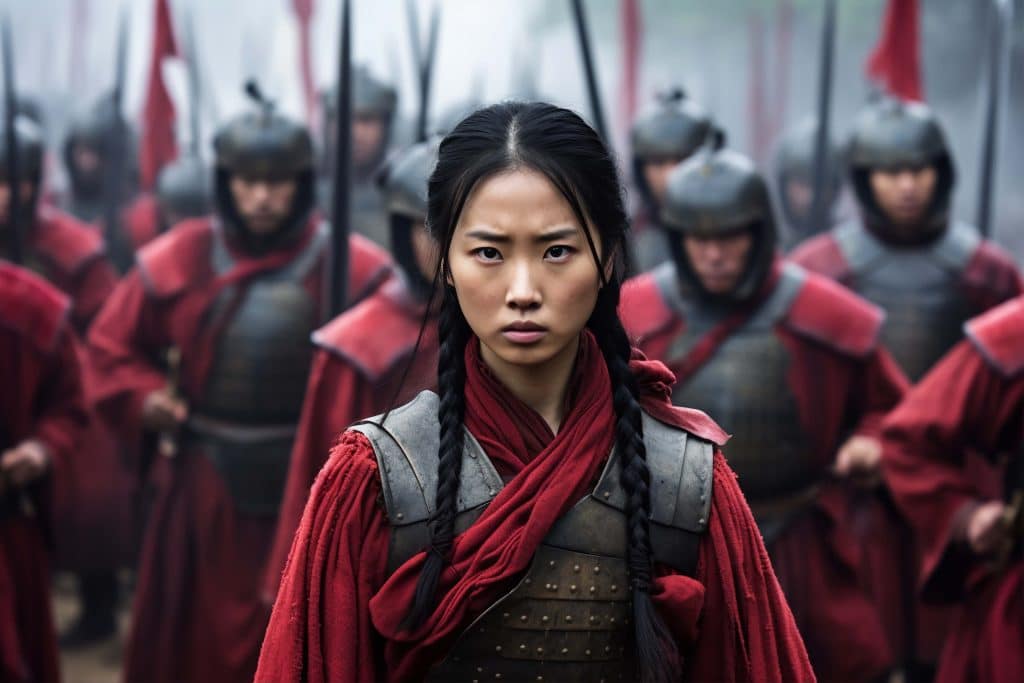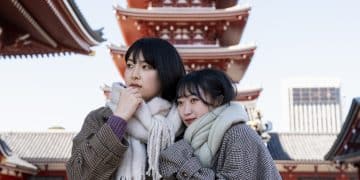5 Differences Between Japanese, Korean, and Chinese Dramas

🌏 The Beauty of Differences in Asian Storytelling
The world of Asian dramas is a vibrant tapestry woven with cultural contrasts, emotional depth, and artistic diversity.
From the gentle subtlety of Japanese doramas to the passionate storytelling of Korean dramas and the epic grandeur of Chinese series, each nation brings its own rhythm, heart, and soul to the screen.
While global audiences often use the word “dorama” to describe all Asian TV dramas, the differences between Japanese, Korean, and Chinese productions are far more profound than language or location.
They reflect centuries of unique cultural evolution — how people love, work, dream, and confront life’s challenges.
🎭 Cultural Contrasts That Shape Storytelling
Each country’s drama industry mirrors its philosophy, traditions, and emotional identity:
-
In Japan, the tone is minimalistic and introspective — finding meaning in small gestures and quiet emotions.
-
In South Korea, the narrative thrives on emotional honesty, family ties, and cinematic passion.
-
In China, stories unfold like poems, blending myth, history, and morality in grand visual form.
These cultural contrasts create distinct storytelling worlds, where the same theme — love, loyalty, ambition, or loss — takes on a completely different tone depending on its origin.
❤️ Emotional Depth That Transcends Borders
The emotional impact of Asian dramas lies in their ability to turn universal feelings into culturally specific art.
A Japanese salaryman’s quiet perseverance, a Korean heroine’s tearful courage, or a Chinese general’s noble sacrifice — each embodies a different emotional philosophy, yet all speak to the same human heart.
This is the beauty of difference: even when stories are shaped by national values, their emotional truths remain universal.
It’s why viewers from Brazil to France, from the U.S. to the Philippines, find themselves crying, laughing, and reflecting along with characters from worlds far away.
🌸 Why Understanding the Differences Matters
Recognizing the differences between Asian dramas isn’t just a matter of comparison — it’s a doorway into deeper appreciation.
When you understand why Japanese doramas prefer silence, why Korean dramas favor emotional arcs, or why Chinese dramas linger in poetic dialogue, you start to see that each reflects a nation’s way of understanding love, duty, and destiny.
These cultural contrasts and emotional layers turn Asian dramas into more than just entertainment; they become a bridge between societies — an invitation to experience humanity through a different cultural lens.
[Thematic Analysis in Doramas — Bringing Cultures Closer]
BBC Culture – The Global Rise of Asian Drama
🇯🇵 1. Japanese Doramas: The Art of Subtlety and Everyday Humanity

🎭 Realism and Quiet Emotion
When discussing the differences among Asian dramas, Japanese doramas stand apart for their quiet realism and understated emotional tone.
While many global series rely on big climaxes, exaggerated emotions, or flashy cinematography, Japanese storytelling thrives in simplicity. Its power lies not in what is said — but in what is felt.
Japanese doramas (J-dramas) embrace a world where small gestures speak louder than dramatic declarations. A character’s silent pause, the act of sharing a meal, or a gentle smile often replaces words. This style reflects Japan’s cultural philosophy of wabi-sabi, which celebrates beauty in imperfection, transience, and subtlety.
Popular series like Nigeru wa Haji da ga Yaku ni Tatsu (We Married as a Job), Shitsuren Chocolatier, and 1 Litre of Tears capture this essence beautifully, showing how emotional depth doesn’t always require dramatic excess.
This subtle form of storytelling creates a distinct cultural contrast with Korean and Chinese dramas — where heightened emotions or grand visuals often take center stage. In Japan, the emotional core is internal, reflective, and deeply human.
🧭 Core Themes: Morality, Growth, and Social Harmony
Unlike other Asian dramas that often revolve around destiny or ambition, Japanese doramas explore life’s everyday moral questions. The focus is not just on love, but on how people grow through responsibility, integrity, and connection.
Recurring themes include:
-
Work ethics and professional morality — Hanzawa Naoki and Unnatural explore corporate life, justice, and ethics within the system.
-
Family and generational dynamics — Kaseifu no Mita and Mother reveal the quiet sacrifices, emotional distance, and reconciliation within families.
-
Personal identity and acceptance — Good Morning Call and 1 Litre of Tears emphasize courage in self-discovery, compassion, and resilience.
These stories don’t ask “Who will they end up with?” but rather “What will they learn?” or “How will they change?”
That focus on personal development over romantic resolution is one of the clearest differences between Japanese doramas and their Korean or Chinese counterparts.
The Japanese protagonist rarely achieves a grand triumph; instead, they achieve inner growth — a quiet victory that mirrors real life more than fantasy.
🌸 Cultural Essence: Harmony, Modesty, and Reflection
To understand Japanese doramas is to understand Japan’s cultural DNA — built on harmony (wa), respect, and emotional discipline.
Characters rarely shout or rebel; instead, they navigate conflicts through patience and empathy. Even when facing failure, they maintain grace, believing that humility and effort define strength.
This makes Japanese dramas profoundly introspective, often prompting viewers to question their own relationships, values, and goals.
They turn daily life — commuting to work, eating breakfast, talking to a neighbor — into a canvas for human connection.
Through this lens, we see the differences between Asian cultures not as gaps, but as reflections of how each society finds meaning. Where Korea might express love loudly, Japan whispers it; where China builds grand epics, Japan finds poetry in the mundane.
🇰🇷 2. Korean Dramas: Passion, Style, and Global Connection
💞 Emotion and Romance at Full Volume
When talking about the differences among Asian dramas, K-dramas stand out for their ability to turn raw emotion into cinematic art.
They are vivid, stylish, and emotionally immersive, pulling viewers into a world where love feels larger than life and every tear carries meaning.
K-dramas combine romance, humor, and moral lessons in a way few other genres can. Shows like Crash Landing on You, Goblin, and Descendants of the Sun exemplify how Korea blends fantasy and reality, weaving heartfelt connections amid war zones, supernatural settings, or corporate offices.
Each storyline feels like an emotional roller coaster — beautifully scripted to evoke empathy, joy, and catharsis.
Viewers don’t just watch the characters fall in love or chase dreams — they feel their growth, heartbreak, and redemption along the way.
🌸 Cultural Roots and Modern Messages
While K-dramas are modern in style, they remain deeply rooted in Confucian values that have shaped Korean society for centuries. Themes such as respect for elders, family hierarchy, loyalty, and perseverance form the emotional backbone of many stories.
Yet, these traditional elements coexist with bold explorations of modern struggles — career ambition, gender roles, and mental health.
Some examples illustrate how K-dramas bridge these cultural contrasts and differences between old and new values:
-
Generational Tension: Reply 1988 shows how family bonds evolve through love, sacrifice, and humor across generations.
-
Social Inequality: Itaewon Class confronts class barriers, ambition, and the courage to challenge social hierarchy.
-
Emotional Healing: It’s Okay to Not Be Okay uses mental health and trauma recovery as metaphors for personal freedom and love.
🎬 Cinematic Aesthetics and Storytelling Craft
Among the most striking differences between Korean dramas and other Asian productions is their cinematic sophistication.
With budgets rivaling feature films, K-dramas invest heavily in production quality, fashion design, soundtrack, and visual storytelling.
Every detail — from the lighting of a rooftop kiss to the rhythm of a background song — is meticulously crafted to heighten emotional resonance.
Their OSTs (Original Soundtracks), often sung by top Korean artists, have become global hits, immortalizing scenes that linger long after the episode ends (“Stay With Me” from Goblin is one iconic example).
The typical 16–20-episode format strikes a perfect balance: long enough for characters to grow meaningfully, yet concise enough to maintain pacing and suspense.
This structure, combined with cliffhangers and emotional payoffs, keeps audiences binge-watching through nights.
Korean directors also master the art of visual metaphor — a cherry blossom falling, a shared meal, or a symbolic bridge walk — small aesthetic details that turn a simple scene into emotional poetry.
🌍 The Global Appeal of Korean Dramas
In the landscape of global entertainment, few phenomena illustrate cultural differences meeting global connection as powerfully as the Korean Wave (Hallyu).
Since the early 2000s, K-dramas have become a symbol of modern Asia, breaking linguistic and cultural barriers. Platforms like Netflix, Disney+, and Viki now feature Korean titles as mainstream hits rather than niche curiosities.
The reasons for this worldwide popularity go far beyond marketing:
-
Emotional honesty — viewers connect with heartfelt sincerity.
-
Cinematic brilliance — top-tier visuals and sound elevate television to art.
-
Blending past and present — Confucian respect coexists with modern freedom.
-
Empowering characters — especially strong, multidimensional women.
-
Cross-cultural resonance — universal stories with Korean authenticity.
💫 Cultural Differences That Define K-Dramas
The success of Korean dramas lies in how they translate local culture into universal emotion.
Their emotional expressiveness contrasts beautifully with the reserved realism of Japanese doramas and the philosophical grandeur of Chinese dramas.
Each nation’s drama style mirrors its collective soul:
-
Japan values harmony and reflection.
-
Korea celebrates emotion and resilience.
-
China treasures history and destiny.
K-dramas embody the human desire to feel deeply and love fearlessly — a quality that continues to attract millions worldwide.
Korea Creative Content Agency (KOCCA
🇨🇳 3. Chinese Dramas: Grandeur, Myth, and Philosophical Reflection

🏯 A World of Epics and Legends
Among the most remarkable differences in Asian dramas, Chinese dramas (C-dramas) stand out for their grandeur, emotional gravity, and philosophical richness.
They are not merely television series — they are living works of cultural art, blending mythology, history, and ethics into immersive visual poetry.
From legendary warriors to celestial romances, C-dramas draw deeply from China’s ancient literary and spiritual heritage. Viewers are transported to worlds where loyalty, destiny, and morality are constantly tested. Every glance, gesture, and line of dialogue carries symbolic meaning — creating the sensation of watching a moral fable unfold through art.
Beloved titles like Nirvana in Fire, The Untamed, and Eternal Love (Ten Miles of Peach Blossoms) reveal how Chinese creators balance historical authenticity with dreamlike fantasy, crafting universes where beauty meets introspection.
Unlike the realistic restraint of Japanese doramas or the modern passion of Korean dramas, Chinese dramas unfold like ancient scrolls — elegant, layered, and contemplative.
Their slower rhythm is not a flaw but a feature. The deliberate pacing invites reflection, patience, and spiritual engagement, encouraging audiences to feel rather than rush — to listen between the lines and find wisdom in silence.
⚖️ Cultural Values, Philosophy, and Moral Vision
To truly understand the differences between Chinese dramas and their Asian counterparts, we must look beyond aesthetics to the philosophical foundation that guides them.
C-dramas are shaped by centuries of Confucian, Taoist, and Buddhist thought, which together define China’s moral and artistic identity.
-
Confucianism teaches loyalty, hierarchy, and social responsibility — themes that appear in political dramas, family sagas, and stories of sacrifice.
-
Taoism inspires balance, humility, and harmony with nature — visible in fantasy narratives where destiny and the cosmos intertwine.
-
Buddhism adds compassion, redemption, and the idea that love and virtue transcend lifetimes — a common motif in romantic epics.
Even modern productions like Go Ahead or Find Yourself echo these same moral frameworks. Characters struggle not only with personal choices but with the spiritual weight of those choices — torn between duty and freedom, emotion and reason, destiny and desire.
These timeless dilemmas reveal one of the defining differences in Chinese storytelling: the focus is not only on what happens externally but on what transforms internally. The journey toward moral integrity is often more important than victory or romance itself.
📺 Structure, Pacing, and Artistic Craft
A clear hallmark of difference in Chinese productions lies in their structure and scope.
While Japanese doramas often tell compact stories in 10–12 episodes and K-dramas unfold across 16–20, C-dramas frequently span 40 to 60 episodes or more.
This extended format gives writers room to explore political intrigue, spiritual transformation, and deep character development.
The pacing is meditative, reflecting the Taoist principle of natural flow. Every scene is carefully constructed to engage not only the mind but also the senses and the spirit.
Visually, Chinese dramas are an aesthetic feast:
-
Elaborate costumes evoke dynastic art and traditional symbolism.
-
Sweeping cinematography captures temples, palaces, and natural landscapes that feel almost sacred.
-
Poetic dialogue and metaphoric language elevate even simple conversations into philosophical reflections.
-
Traditional music, featuring instruments like the guzheng and bamboo flute, creates emotional depth rooted in cultural resonance.
This artistic attention makes C-dramas not only entertaining but spiritually immersive — turning television into a meditative cultural experience.
🌸 Cultural Grandeur and Global Resonance
Despite their historical roots, C-dramas have achieved impressive global reach. Streaming giants like iQIYI, Tencent Video, and Netflix have brought Chinese storytelling to millions of international viewers.
Their growing success reflects a fascinating paradox: while built on tradition, C-dramas speak directly to modern global audiences seeking authenticity and meaning.
Their universal themes — love, justice, destiny, and redemption — remind viewers that cultural differences can unify rather than divide.
International fans are drawn to their artistic excellence, symbolic storytelling, and emotional sincerity.
They appreciate that these dramas do not rush or exaggerate — they invite reflection. In a fast-paced world, this contemplative approach feels refreshing, even healing.
Chinese dramas prove that there is room for both spectacle and silence, grandeur and grace — and that the deepest emotions often grow in the spaces between words.
💡 Why Chinese Dramas Stand Out
Key strengths of Chinese dramas:
-
Profound connection to philosophy, history, and mythology
-
Epic narratives filled with emotional and moral complexity
-
Aesthetic mastery through costume, music, and dialogue
-
Slow, meditative pacing that nurtures depth and reflection
-
Celebration of honor, integrity, and spiritual balance
C-dramas remind us that great storytelling transcends entertainment — it becomes a mirror for the human spirit.
Through their unique differences, they teach us that across cultures and centuries, humanity still seeks the same light: truth, harmony, and love.
🌸 4. Cultural Comparison: The Spectrum of Asian Storytelling
| Element | 🇯🇵 Japanese Doramas | 🇰🇷 Korean Dramas | 🇨🇳 Chinese Dramas |
|---|---|---|---|
| Tone | Realistic, introspective | Emotional, romantic | Poetic, epic |
| Length | 10–12 episodes | 16–20 episodes | 30–50+ episodes |
| Main Focus | Everyday life, ethics, self-growth | Love, ambition, social tension | Honor, destiny, philosophy |
| Visuals | Minimalist and subtle | Glossy and cinematic | Lavish and symbolic |
| Cultural Base | Harmony and simplicity | Emotion and aspiration | Tradition and spirituality |
| Pacing | Slow and reflective | Balanced and dynamic | Long and immersive |
Each storytelling tradition mirrors its national character:
-
Japan values restraint and balance.
-
Korea celebrates emotion and ambition.
-
China honors history and destiny.
💞 5. Shared Humanity: Why We Love Them All
The beauty of Asian dramas lies not only in their cultural differences but in how those very contrasts illuminate our shared humanity.
Each country — Japan, Korea, and China — expresses emotion through a unique cultural lens, yet the feelings beneath the surface remain universal. Love, loss, forgiveness, and hope may look different across borders, but they touch the same part of the human heart.
These differences in storytelling styles create a mosaic of emotion.
In Japanese doramas, empathy grows through silence — a quiet gesture, a nod, a meal shared in understanding.
In Korean dramas, emotion bursts forth like a song — vibrant, passionate, and unafraid to show tears.
And in Chinese dramas, feelings flow like poetry — deep, philosophical, and guided by destiny.
When we cry for a Japanese salaryman enduring life’s quiet struggles, laugh with a Korean family celebrating love despite chaos, or admire a Chinese heroine’s moral courage in the face of fate, we experience something far greater than entertainment.
We participate in a global conversation about what it means to be human.
Asian dramas remind us that differences are not barriers — they are bridges.
Through them, we learn that empathy transcends language, that beauty can be found in unfamiliar customs, and that emotion, in all its forms, is the truest universal language.
Because beyond all differences, the heart beats the same.
🌠 Conclusion: Three Cultures, One Emotional Language
Japanese, Korean, and Chinese dramas each carry a distinctive rhythm of storytelling — like three instruments playing the same melody in different tones.
-
Japanese doramas teach us to appreciate simplicity and empathy.
-
Korean dramas awaken passion, ambition, and resilience.
-
Chinese dramas connect us to history, beauty, and the poetry of time.
Together, they reveal that storytelling is not just about culture — it’s about humanity.
No matter where the drama comes from, the emotions it conveys are universal.





